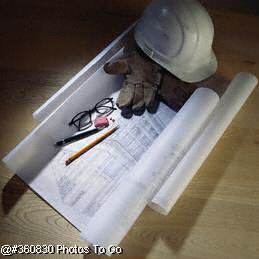|

PHILLY HISTORYPhiladelphiaHistory Foundation and early settlement acquired the province of Pennsylvania in 1681 from
King Charles II of England as aplace where his fellow Quakers could enjoy freedom of worship and a chance togovern themselves
and develop their own way of life. The King made the grant,signed on March 4, 1681, and proclaimed it a few weeks later, on
April 2, partly tosettle a debt owed to Penn's father, Adm. Sir William Penn, upon his death and alsoto complete the settlement
of the Middle Atlantic region with Englishmen. Penn senthis cousin William Markham to take charge of affairs of government
and also to layout the city Penn named Philadelphia, city of "brotherly love," the name symbolizinghis idealistic
concepts. From England, Penn wrote in 1681 asking that "the Riversand Creeks be sounded on my side of the Delaware River
. . . in order to settle agreat Towne, and be sure to make your choice where it is most navigable, high, dry,and healthy."
He wanted every house to be placed in the middle of its own plot toprovide ground about it "that it may be a greene Country
Towne, which will neverbe burnt, and always be wholesome."Penn arrived in 1682 but had little chance to enjoy his city.
He was forced to travelto England in 1684 and was unable to return until 1699. By then, Philadelphia was aflourishing town
with many shops and trading houses, as well as several hundreddwellings and about 10,000 people clustered close to the riverfront.
Penn's governordeclared the city already was the equal of New York "in trade and riches." Penn'spolicies throughout
the colony of religious toleration and the right of the people totake part in the government, in addition to growing prosperity,
soon began toattract thousands of English, German, and Scots-Irish settlers, and most came byway of Philadelphia.Philadelphia
by the 1770s had grown to at least 30,000 persons in the central city,and it was the third most important business centre
in the British Empire,overshadowed only by Liverpool and London. This position was due in large measureto the city's site
at the confluence of the Delaware and Schuylkill rivers, whichprovided the city access to inland farm regions and to the coal
and ore resourcesthat supplied the early iron industry.A visitor in 1756 wrote that "Everybody in Philadelphia deals
more or less in trade,"a tribute not merely to Philadelphia's location but also to the shrewd businesstalents of the
merchants. A large and profitable system of involved foodstuffs andwood products, such as lumber and barrel staves, that
went from Philadelphia to theWest Indies and there were exchanged for sugar, rum, and other West Indianproducts. These were
carried to English ports, where they in turn were exchangedfor English manufactures to be brought back to Philadelphia. The
prosperous farmcountry of interior Pennsylvania supplied the Philadelphia merchant with goods forthe West Indies, and a profitable
coastal trade existed with other colonies anddirectly with England. By the 1750s Philadelphians had invested heavily in theflourishing
charcoal-iron industry. Anthracite coal became an important mineralresource of Pennsylvania 100 years later, and the Philadelphia
capital played aleading part in this industry as well as in the mining of bituminous coal farther tothe west. Philadelphia
continued its leadership in foreign commerce until about1810, when New York City, with an even more advantageous location,
took over thisposition. Philadelphia surrendered its position as financial capital of the nation in the1850s.Shipyards had
flourished along the Delaware since colonial days. Most of what cameto the city was raw material for manufacture, and Philadelphia
became a majorcentre of the early Industrial Revolution in the United States. In 1785 invented thefirst gristmill operated
entirely by mechanical power. The city was a pioneer in manufacturing and took the raw iron from inland furnaces and made
it into toolsand implements, such as saws, huge iron castings for cotton-mill machinery, andthe first American-built steam
locomotives. By 1860 the value of Philadelphia'smanufactures ran into several hundred million dollars, about 30 percent of
thenational total. Textiles, ships, iron products, leather, refined sugar, and boots andshoes were leaders, giving important
aid to the Union in the Civil War.|
|

